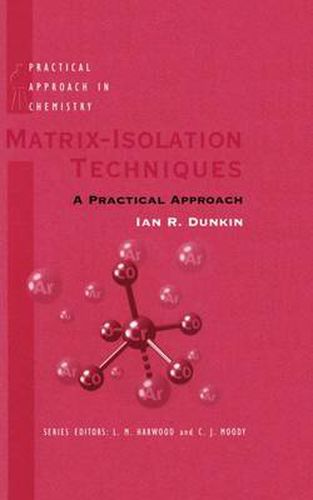Readings Newsletter
Become a Readings Member to make your shopping experience even easier.
Sign in or sign up for free!
You’re not far away from qualifying for FREE standard shipping within Australia
You’ve qualified for FREE standard shipping within Australia
The cart is loading…






Matrix isolation is a technique for trapping reactive species at very low temperatures and studying them spectroscopically. This book offers detailed practical advice on how to carry out matrix-isolation experiments, and is a unique introduction to the subject. Chapter 1 introduces a brief historical survey of the development of the technique that incorporates a discussion of its strength and limitations. Chapter 2 provides a thorough description of the building of a matrix-isolation laboratory from scratch. All the necessary equipment is described in full and there are diagrammatic examples throughout. In later chapters, ancillary equipment for generating reactive species, and an informative description of the various methods for forming low-temperature matrices are dealt with. There then follows a chapter on the specialized technique of matrix photochemistry with polarized light. The final chapter comprises an extensive collection of classic matrix experiments which have\nbeen selected due to their ease of application and which will thus serve as useful exercises for testing new pieces of equipment.
This accessible text offers thorough coverage of the topic and will be invaluable to postgraduate and industrial chemists as an introduction to matrix isolation techniques. Researchers in chemistry and related fields who are considering whether matrix isolation can play a part in their own research will also find this book useful.
$9.00 standard shipping within Australia
FREE standard shipping within Australia for orders over $100.00
Express & International shipping calculated at checkout
Matrix isolation is a technique for trapping reactive species at very low temperatures and studying them spectroscopically. This book offers detailed practical advice on how to carry out matrix-isolation experiments, and is a unique introduction to the subject. Chapter 1 introduces a brief historical survey of the development of the technique that incorporates a discussion of its strength and limitations. Chapter 2 provides a thorough description of the building of a matrix-isolation laboratory from scratch. All the necessary equipment is described in full and there are diagrammatic examples throughout. In later chapters, ancillary equipment for generating reactive species, and an informative description of the various methods for forming low-temperature matrices are dealt with. There then follows a chapter on the specialized technique of matrix photochemistry with polarized light. The final chapter comprises an extensive collection of classic matrix experiments which have\nbeen selected due to their ease of application and which will thus serve as useful exercises for testing new pieces of equipment.
This accessible text offers thorough coverage of the topic and will be invaluable to postgraduate and industrial chemists as an introduction to matrix isolation techniques. Researchers in chemistry and related fields who are considering whether matrix isolation can play a part in their own research will also find this book useful.